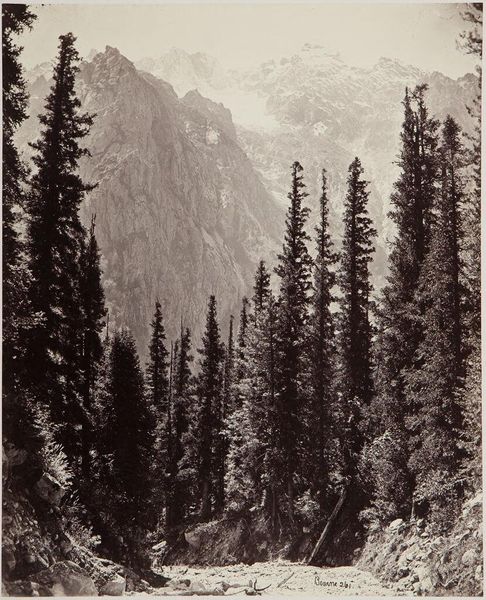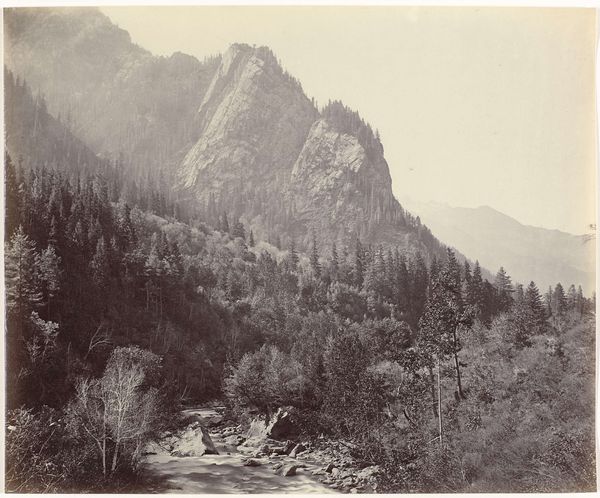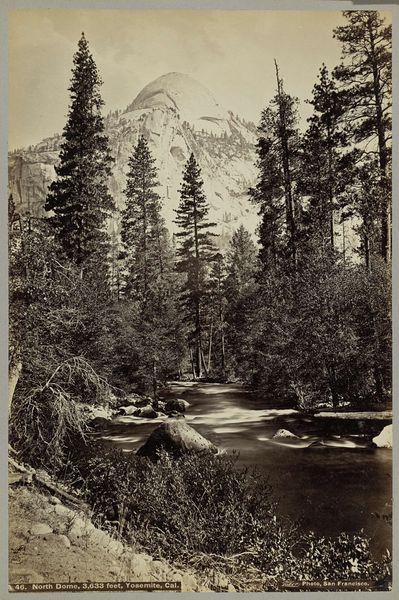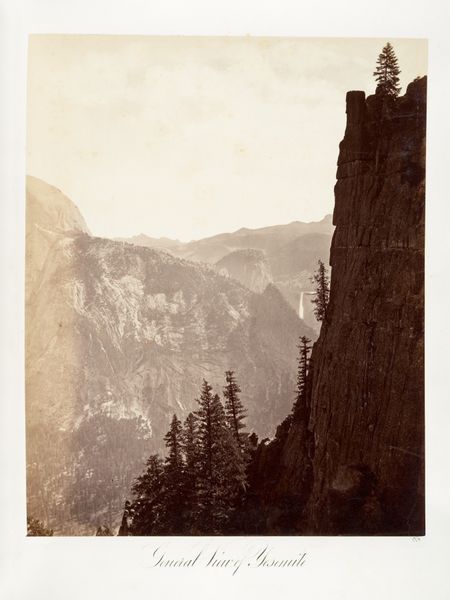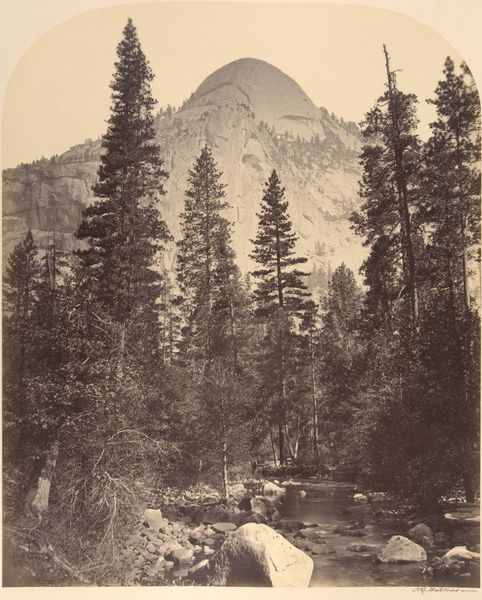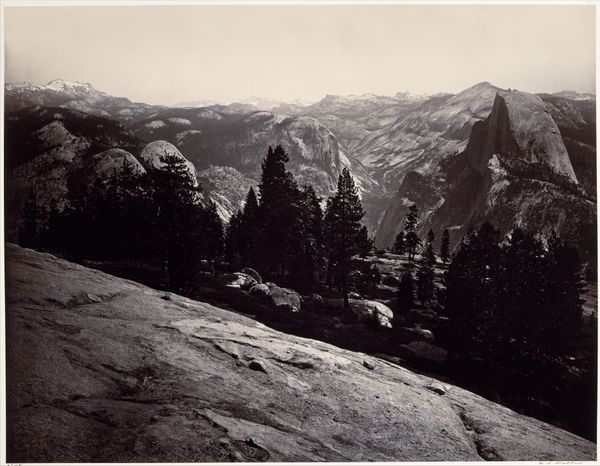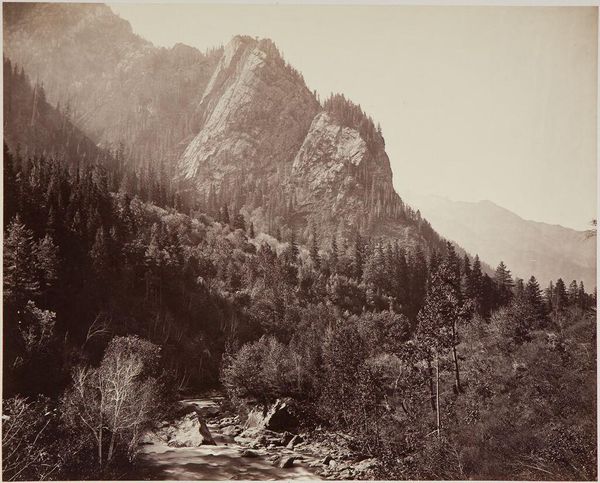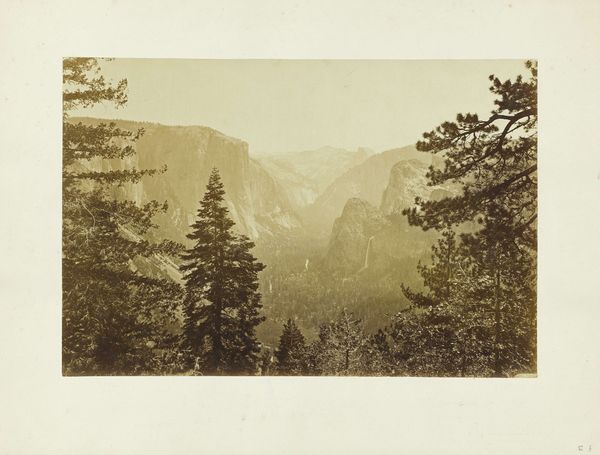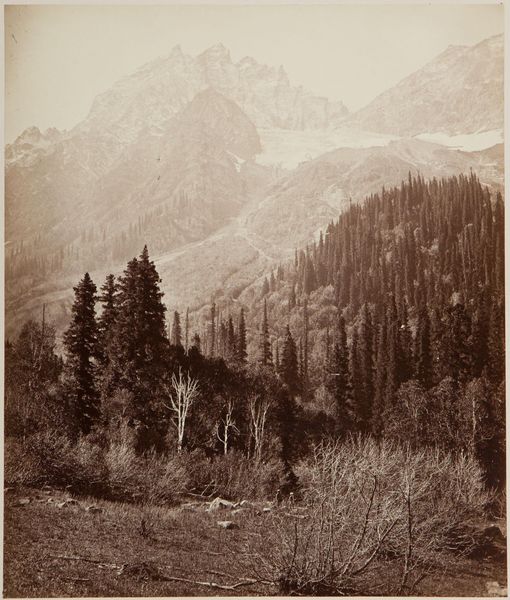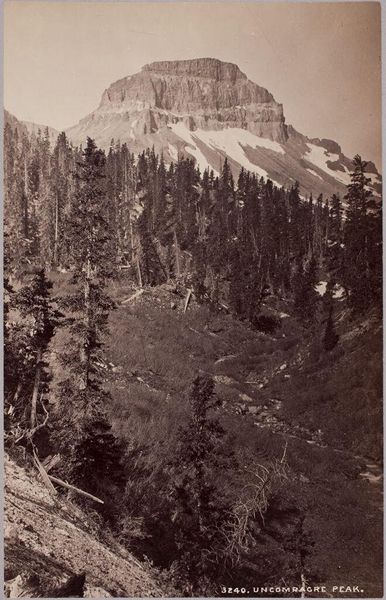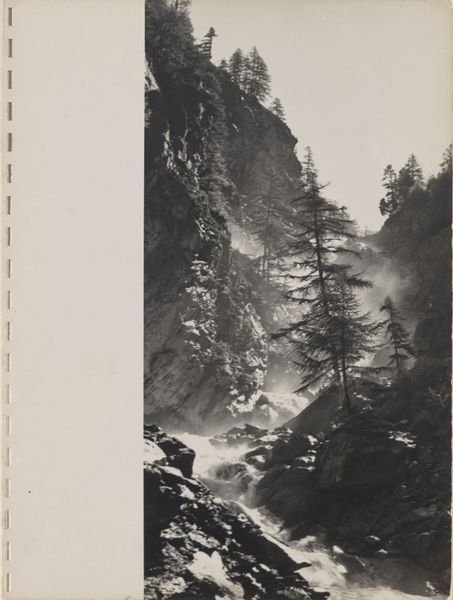
Dimensions: height 245 mm, width 192 mm
Copyright: Rijks Museum: Open Domain
Curator: This gelatin silver print, “Gezicht op de The Domes in Yosemite Valley,” was taken by Isaiah West Taber sometime between 1880 and 1900. It's a powerful image, wouldn't you agree? Editor: Yes, it's stunning. There's a hazy, almost dreamlike quality to the landscape. It feels grand, but also very still and solitary. How do you interpret the composition and mood of the photograph, considering the context of its time? Curator: That haze is key, as it softens the details but speaks volumes about Manifest Destiny. Think about it: these majestic landscapes became potent symbols. Photographers like Taber helped solidify this idea, inviting viewers, primarily white settlers, to see this space as both beautiful and available, ripe for the taking, obscuring the violent displacement of indigenous populations that made these vistas accessible. Does this shift your perspective? Editor: Definitely. So, what might appear as a simple landscape photograph also played a part in shaping perceptions tied to territorial expansion? Curator: Precisely! We must confront how these idealized landscapes actively contributed to erasure. Even the sublime is a construct. The composition, carefully framed to exclude any signs of prior inhabitation, is no accident. Considering whose perspective is privileged allows for a better understanding of this photo. How can we then look at landscape photography today, armed with this awareness? Editor: It's really powerful to consider the role of these images in constructing a specific narrative. It’s a good lesson to always look beyond the surface aesthetic. Curator: Agreed! Recognizing these layered meanings pushes us to critically examine all visual representations and their potential to both reflect and shape social realities.
Comments
No comments
Be the first to comment and join the conversation on the ultimate creative platform.
